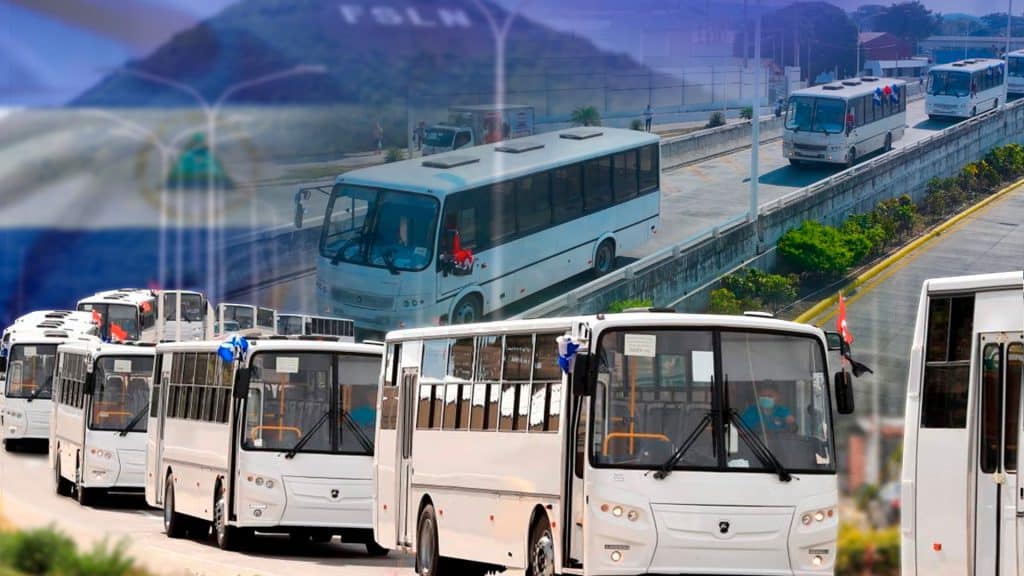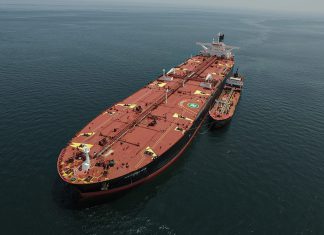
Nicaragua has a renewed public transport fleet. With the new entry of 150 units of buses, ‘Modelo Paz’, from the Russian Federation, the Sandinista Government has managed to increase the country’s fleet by approximately 1,500 totally new units, incorporated between 2009 and 2023.
In the decade between 1979 and 1989, after the triumph of the Revolution, the Sandinista Government managed to acquire close to 930 new bus units; while, during the 16 years of Neoliberal Governments, between 1990 and 2006, only 50 new buses were acquired, among other used units, for school transportation, imported from the United States.
The Vice President of Nicaragua, Rosario Murillo, announced that, with the arrival of the new Russian buses in the country, the transport of the municipalities of Chinandega, Leon, Esteli, Matagalpa, Juigalpa, Masaya, Jinotepe, Managua and Tipitapa will be strengthened.
At the end of January 2023, the Government of President Daniel Ortega delivered another 150 Russian bus units to the different Collective Transport Cooperatives, also meeting the demands of the citizens, with the optimization of this service.
The Revolution and Transportation for Nicaraguans
Recapitulating the history of public transportation in Nicaragua, the Nicaraguan president recalled that the Sandinista Front, in the eighties, after the triumph of the Revolution, made an effort to invest 8.8 million dollars to buy bus units.
At that time, it was possible to import 210 units of DINA brand buses from Mexico; and 100 units, Pegaso brand, imported from Spain. The Sandinista Government, in this context, also made another investment of 10.2 million dollars, importing from Brazil some 250 units of buses, the Mercedes Benz brand.
Three years later, in 1983, the government of President Daniel Ortega, in a second effort, made an investment of 3 million dollars to import another 60 units of Mercedes Benz buses from Argentina.
The Nicaraguan leader recalls that, in 1985, a new effort was made to bring more buses into the country, and 250 Robur minibuses were brought, which were sent by the Government of the Democratic Republic of Germany, when President Erich Honecker was in charge.
Later, in 1989, the Sandinista Government made a new investment of 3 million dollars, to acquire 60 Isuzu brand buses, which came from Japan.
President Daniel stressed that, in total, the Sandinista Government managed to incorporate 930 new bus units into the country, from 1979 to 1989, in a sustained effort.
The buses used in the neoliberal years
In 16 years of Neoliberal Governments, public transport in Nicaragua has been highly stagnated. President Daniel assures that these governments received millions of dollars from the United States to invest in transportation and roads, however, it is not known what they did with the money.
During the Government of Violeta Barrios de Chamorro, Nicaragua only acquired 50 Pegaso brand buses, however, these had been managed to Guatemala by the Sandinista Government. Later, during the period of the government of Arnoldo Alemán, any bus was acquired. During the government of Enrique Bolaños, 50 buses were negotiated with the Government of Japan, which arrived in the country in 2007, when the Sandinista Front had already assumed the Government.
Modernity Arrives: Russian and Mexican Buses
The country has been making significant steps in terms of the modernization of public transport, after assuming the administration of President Ortega.

During a new stage of greater growth in Nicaragua, with high levels of peace, unity and consensus, among the different sectors, the Sandinista Government managed to acquire the first fleet of Russian buses, made up of 380 totally new units, in 2009.
Subsequently, in 2012, the Sandinista Government made a visit to Mexico, managing a credit fund, financed by the Central American Bank for Economic Integration (CABEI), leading to the purchase of 350 DINA brand Mexican buses.
You can read: Nicaragua develops extensive free visual care in the Public Health system
The Central American country continued advancing in this process of modernization of its collective transport, arriving in 2012 to acquire another 170 bus units from Russia; and in 2021, under a new agreement, it obtained another 250 KAVZ brand buses, managing not only to modernize the fleet, but also to expand it in the capital.
It may interest you: Nicaragua headquarters of the Conference of American Armies
In the first months of 2023, the Government of President Daniel Ortega has managed to acquire 300 totally new buses from Russia, which, in addition to strengthening the Collective Urban Transport, in Managua, have been destined for different departmental capitals of the country.
The Sandinista Government has also marked a historic milestone in the modernization of road infrastructure at the national level, joining the Pacific with the Nicaraguan Caribbean, a fact that is unprecedented in investment in this sector.
Between 2007 and 2020, the road infrastructure was improved with the rehabilitation or construction of 3,794.02 km of highways and roads, including 1,967.84 km of new paved roads, the improvement of 856.39 km of paved roads and 969.79 km of unpaved roads; managing to connect the country by land, in optimal conditions.
In this way, Nicaragua managed to position itself in fifth place in the ranking of countries with the best roads in all of Latin America, according to the Global Competitiveness Index of the World Economic Forum.





